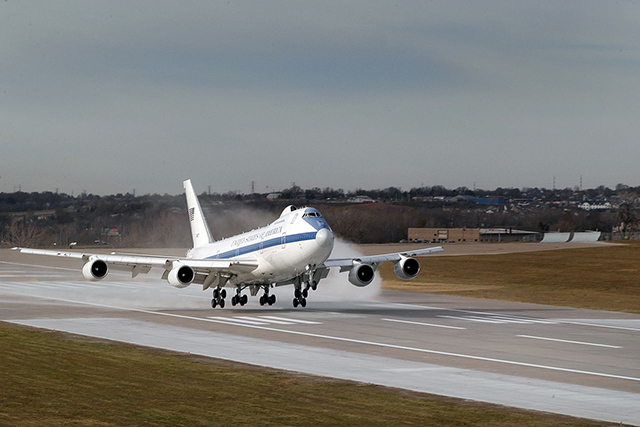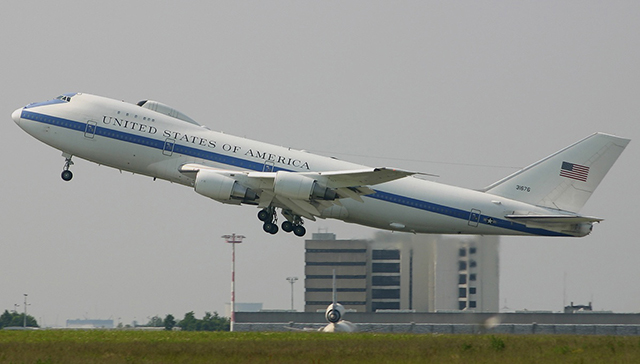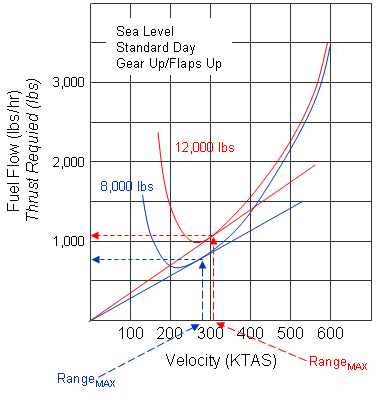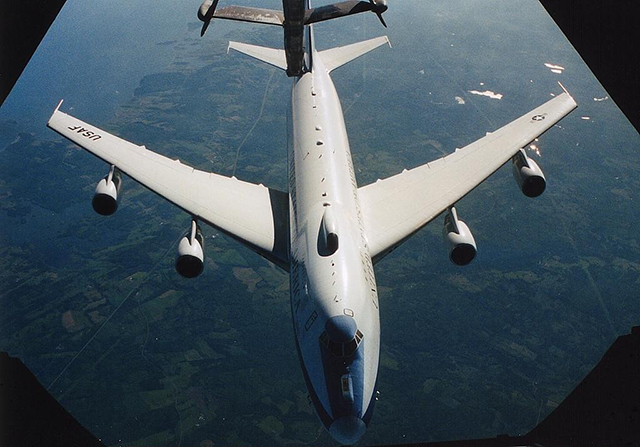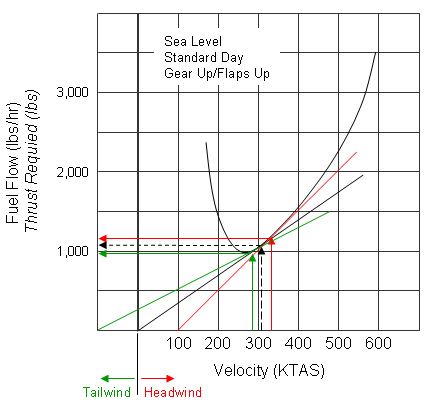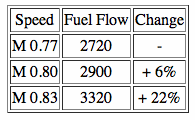Here's something I hear now and then: "Fly faster in a headwind, slower in a tailwind to save gas." I bet you've heard that but not the next: "Overpressure the aircraft with a tailwind so its cross section catches more of the push."
— James Albright

Updated:
2012-04-24
A lot that we've heard over the years about range and endurance in aircraft just aren't true. Some of it comes from people applying nautical rules to things aeronautical. Some of it is just hogwash. You can figure most of it out with your performance charts or just running a few flight plans.
The upgrade process from copilot to aircraft commander to instructor pilot wasn’t as thrilling the second time around, but it was satisfying nonetheless. The squadron allowed me to fill my time as I saw fit, so I bounced from one technical program to another. After computerizing the flight planning system I happily devoted myself to life as an instructor pilot, something I didn’t do a lot of in the Boeing 707. I was just getting comfortable when the next good deal fell into my lap.
“Test pilot?” I asked the squadron commander after he gave me the position, “the Air Force doesn’t have test pilots any more. But thanks, I’ll take the job.”
Yes, it was true. The days of strapping on the jet, hanging it over the edge, punching a hole in that ol’ envelope; those days are forever gone. It doesn’t make any sense at all to do any of that when you can do all the experimenting with computers. Besides, this job was something entirely different. As the squadron’s functional check pilot, it was my job to fly our four aircraft after any modifications or major maintenance, to make sure they still performed according to the manufacturer’s specifications. There was no danger and no extraordinary skills were needed. But it was a lot of time hand flying our aircraft with minimum crews and no passengers. It was the best kind of flying.
When I started life in the aircraft as a copilot, I adopted my usual “shut up and listen” attitude to soak in everything the adults could teach me. Every now and then, however, I had to question the powers that be.
“We fly eight six Mach because that is best range,” every pilot in the squadron told me. The aircraft’s maximum speed, MMO, was 0.92. There was no question the aircraft flew well at 0.86 Mach, but was it really the speed at which the airplane got the most distance?
“At what weight?” I would ask, when I thought I could get away with it.
“We fly eight six Mach,” they would say. “What part of that don’t you understand?”
I dutifully flew at 0.86 Mach, except when I found a reason to do otherwise. But once I got a chance to “test fly” the aircraft now and then, I would take them up with a note pad in hand ready to record performance. I knew the aircraft’s Angle of Attack indicator would give me the maximum endurance speed simply by flying the L/DMAX AOA. That AOA didn’t change with weight, but the indicated airspeed to achieve that angle would. But what about maximum range? We spent a lot of time over water and knowing how to stretch your distance would be more important than stretching your time aloft.
Unfortunately, the Boeing 747 flight manual and its counterparts at United Airlines and the Air Force had scant details on the subject. Our Air Force manual gave us the L/DMAX AOA of 0.3 so we always knew how to achieve maximum endurance, maximum climb angle, or maximum engine-out glide range. From basic aero I knew the maximum range would be higher, but I couldn’t prove it.
What we did have were pages upon pages of air nautical miles per pound charts. I started to graph these just to see where they would lead me and they started to look very familiar, just like the T-38 thrust required / fuel flow versus airspeed charts from safety school. From my aero textbooks:
- L/DMAX is the lowest point of the thrust required versus air speed curve
- An increase in weight shifts the entire curve up and forward
While the textbook was interested in an increase in weight, my focus was on what happened as the aircraft burned off fuel.

While the angle of attack at which L/DMAX occurs remains constant with weight, the airspeed at which this occurs decreases as the aircraft becomes lighter.
Because L/DMAX occurred at the low point of the curve, the tangent from the origin had to occur at a higher speed.

The aircraft’s maximum range will occur at an airspeed higher than at which L/DMAX occurs.
While most long-range pilots have an instinctive idea that as you try to maximize every drop of fuel the speed is going to come back, the curves also proved that so too must the throttles:

To obtain maximum range, the thrust of the aircraft must be reduced as the airspeed for maximum range decreases with decreasing aircraft weight.
A classic ocean-going tale of endurance involves sea currents and ship speed. With the prevailing current going against a ship, captains would routinely push their vessels faster to minimize the time with the “head current.” With currents pushing them, they would throttle back. Some of our pilots said the same should be true with airplanes. None of our procedures advocated this. What of the math?
Most of the aero textbooks I had were silent on the subject. My favorite text, however, compared thrust producing aircraft (pure jets) to power producing aircraft (props) and proposed shifting the origin on the tangent line:
The chart seemed to support the sailors-turned-aviators who advocated a throttle change in response to wind condition. In a headwind, the chart dictates more speed which takes more thrust. But it also burns more fuel per hour. The sailors will say you make that up because you get there faster and spend less time in the headwind. Does that hold true in actual practice?
After a couple of tries, I was convinced the method would not work in our airplane and that the curve origin shifting idea was wrong. I pulled out the T-38 flight manual and discovered the method would not work for it either. (See Thrust / Wind Effect on Maximum Range.) I didn’t have the time to pursue it and besides, we had lots of gas. I forgot all about it, until . . .
Postscript
Twenty years later, flying an airplane with a bit less range, I was concerned about stretching the aircraft’s legs again. We had a brand new Gulfstream G450 and the owner wanted to know how far it would travel. We took a day to see if we could do ten hours comfortably (yes) and with adequate reserves (yes). I noticed the fuel flow at heavier weights changed dramatically with speed.
The Gulfstream G450 engines have a bypass ratio of 4 to 1, not has hefty as the Boeing 747 but still with a dramatic bias away from the jet section: 80 percent of the power came from the fan.
Using a fairly straight flight from New York Kennedy to Los Angeles International, I was able to compare a no-wind flight plan at M0.80 with two plans with a 100 knot headwind, one at M80 and the next at M83.
KJFK — KLAX (2178nm)
0 wind M80 (460 TAS) ETE 4+45 Climb 3,000 lbs TOC FF 2810 PPH Fuel Burn 15,400
100 HW M80 (460 TAS) ETE 6+03 Climb 3,000 lbs TOC FF 2810 PPH Fuel Burn 19,150
100 HW M83 (475 TAS) ETE 5+50 Climb 3,000 lbs TOC FF 3320 PPH Fuel Burn 21,250
Each flight plan was based on starting with 25,000 lbs of fuel, not a full load, but allowed me to extrapolate total range in each wind condition based on top of climb fuel burn:
Cruise Range (25,000 lbs fuel / 3,000 lbs climb to 43,000’ / Range to zero fuel)
0 wind M80 (460 TAS) TOC FF 2810 PPH / Range after climb 3,600 nm
100 HW M80 (460 TAS) TOC FF 2810 PPH / Range after climb 2,820 nm
100 HW M83 (475 TAS) TOC FF 3320 PPH / Range after climb 2,480 nm
Of course in each condition the fuel flow would improve as the aircraft burned fuel and the airplane would do much better with a full load of fuel and step climbs. Assuming the possible improvements would help each event about equally, the conclusion was inescapable: speeding up in a headwind does not improve range. I could not rule out the effect with a pure jet engine, so the rule has to be with a caveat:

Maximum range Mach does not change for conditions of headwinds or tailwinds on most turbofan aircraft.

